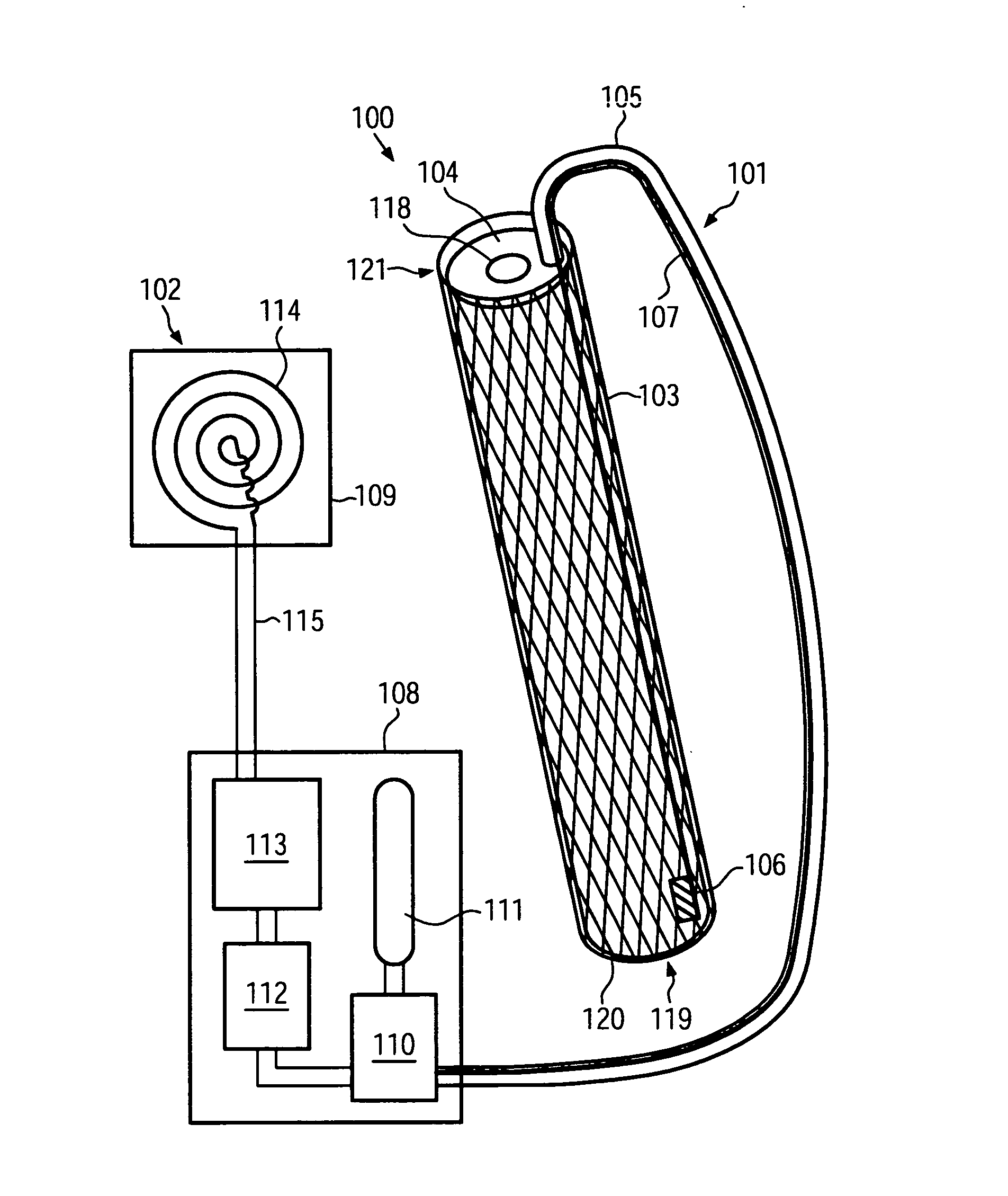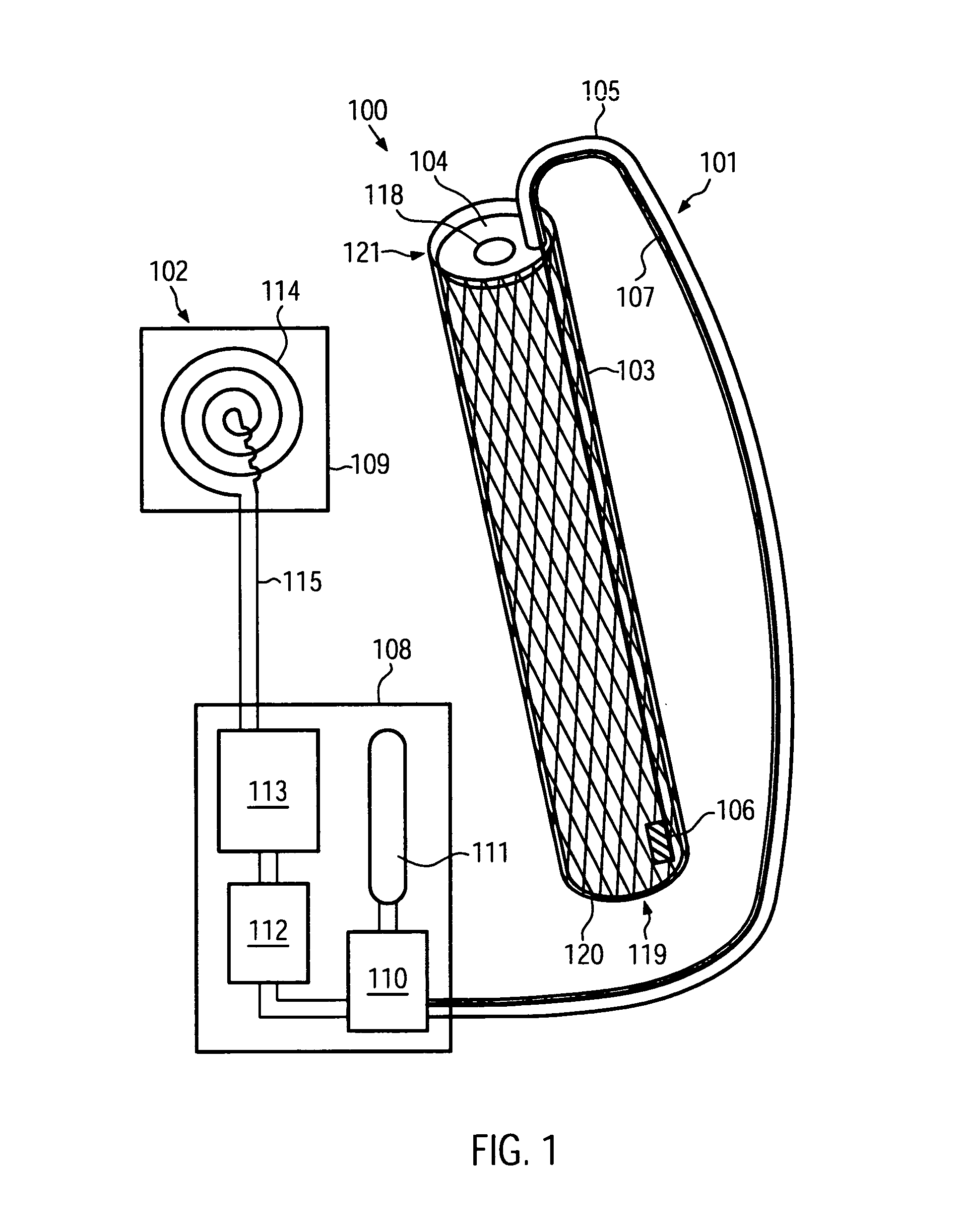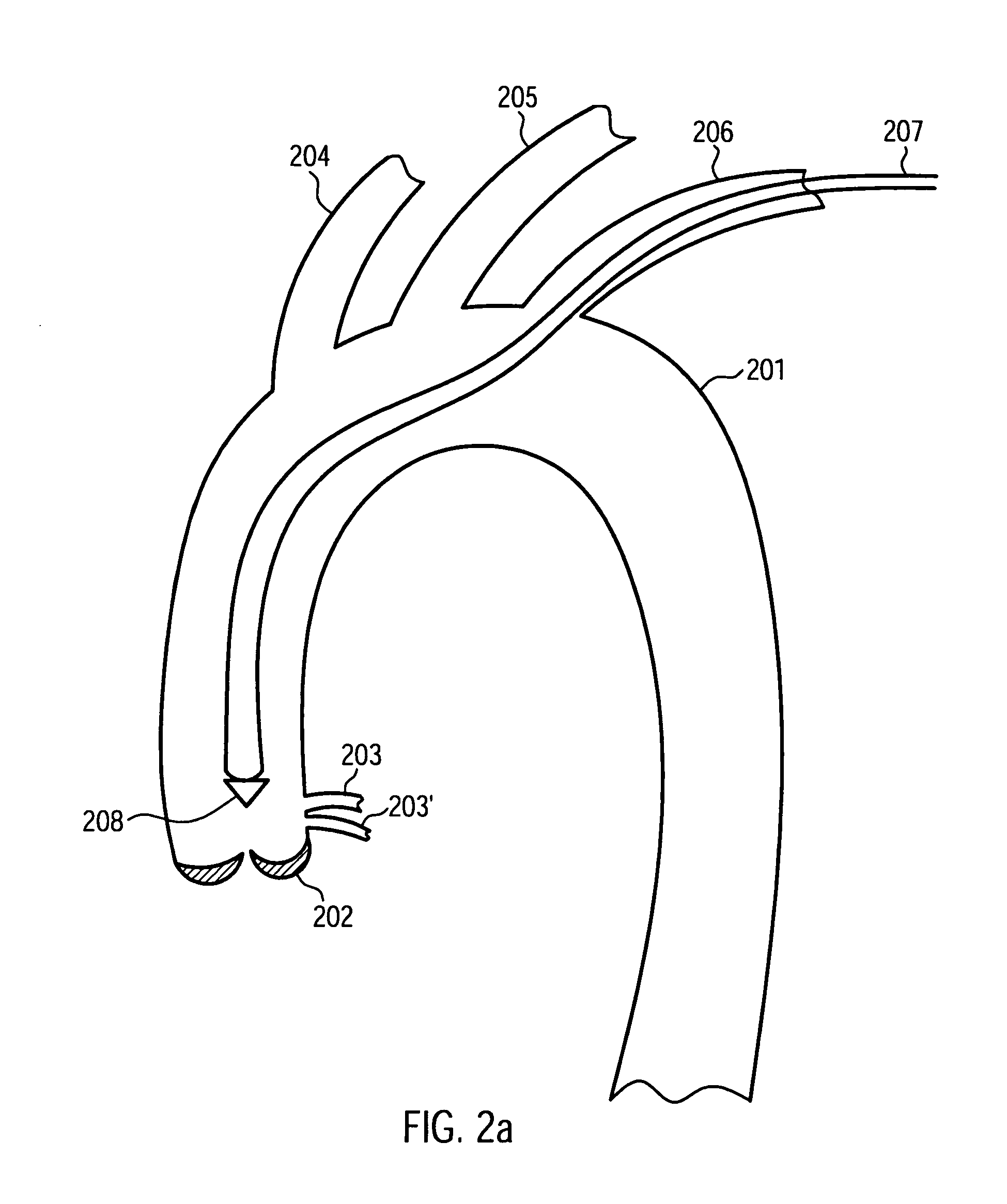Cardiac assist device
a technology of assist device and aorta, which is applied in the direction of catheter, diagnostic recording/measuring, therapy, etc., can solve the problems of rare transplant organs, reduced blood supply to vitally important organs, and death of patients, so as to reduce the risk of aortic rupture, facilitate the implantation of fluid supply lines, and reduce the resistance of fluid supply lines
- Summary
- Abstract
- Description
- Claims
- Application Information
AI Technical Summary
Benefits of technology
Problems solved by technology
Method used
Image
Examples
Embodiment Construction
[0042]FIG. 1 shows a schematic cross-sectional view of a cardiac assist device 100 according to an embodiment of the present invention. The cardiac assist device 100 comprises an endovascular portion 101 and an extravascular portion 102. The endovascular portion 101 is configured for implantation into a blood vessel of a patient. The extravascular portion 102 may be configured for implantation into other portions of a patient's body.
[0043]The endovascular portion 101 comprises a stent 103. Similar to stents adapted for the treatment of aortic dissections known to persons skilled in the art, the stent 103 may comprise a wire arranged in a zigzag configuration and / or forming a grating, mesh and / or ring and comprising a metal such as, for example, a stainless steel alloy, a cobalt chrome alloy, titanium, tantalum, platinum or gold. In other embodiments, the stent 103 can comprise a high elastic limit material such as Eligoy. The stent 103 may have a substantially cylindrical shape, enc...
PUM
 Login to View More
Login to View More Abstract
Description
Claims
Application Information
 Login to View More
Login to View More - R&D
- Intellectual Property
- Life Sciences
- Materials
- Tech Scout
- Unparalleled Data Quality
- Higher Quality Content
- 60% Fewer Hallucinations
Browse by: Latest US Patents, China's latest patents, Technical Efficacy Thesaurus, Application Domain, Technology Topic, Popular Technical Reports.
© 2025 PatSnap. All rights reserved.Legal|Privacy policy|Modern Slavery Act Transparency Statement|Sitemap|About US| Contact US: help@patsnap.com



